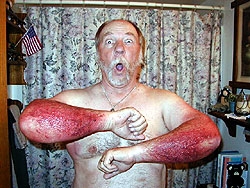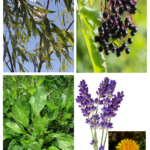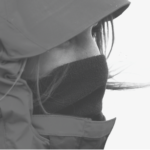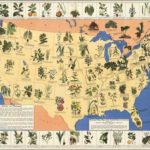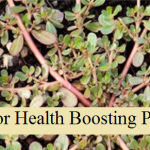Poison Ivy, Oak & Sumac – Avoiding & Treating
No one wants to end up with the rash, itch or reaction of the gentleman pictured above! The first step to avoiding the predicament altogether is to avoid the cause. In this case this gent came into extremely close contact with poison sumac. Knowing how to spot the culprit is step one to not ending up in his situation. There are a number of plants that are considered poisonous to humans but the majority of them require the person to ingest them. Not so with urushiol which is what causes the rhus dermatitis (rash) when humans come into contact with it. Urushiol is the oil that is produced by and found on the poisons versions of ivy, oak and sumac. It only takes a brief second of contact with this oil found on the entire plant even after the plant is dead. Not everyone will be as effected by the urushiol to the same degree. Some people are more sensitive than others to its affects. But very few people have no negative reaction. Reactions can be serious enough to cause death. Identifying the plants that produce urushiol is the first thing we should learn! (3 links)
These plants would be especially bad to run into while bugging out and medical treatment isn’t readily available! For more info on identifying these plants see the link below
How to Identify and Avoid Poison Ivy, Oak, and Sumac
The first step to treating someone who has come in contact with these plants is to stop the itching. Scratching not only helps spread the urushiol to other parts of the body but can open the blisters or hives and creating infection. Infected rash is one of the most uncomfortable scenarios and one of the dangers of being afflicted. So immediately wash the area that came into contact with the plant and all tools, clothing, gloves etc. that also may have touched it. Then to proceed with home remedies that can keep the exposure from becoming too uncomfortable. There are several good remedies out there, you just have to find the one that works best for you. Not a fun process but hopefully by washing immediately you have eliminated the worst of the reaction. The one I personally find works best for us can be found at the link below
Other remedies are linked below
How to treat and avoid poison ivy, poison oak and poison sumac
If the rash continues to spread, the blisters begin to leak, please seek medical attention as soon as possible. Please do not buy into the old folk story that eating these plants will give you immunity! It won’t! It could make you very ill however and in some cases cause the external reaction to become an internal one!
Enjoy your time in the outdoors but keep your eyes open for those plants that can ruin your day…. or your entire month!
 This is an aggregated site. Please be aware some of the sites we link you to could have pop ups. We have no control over them. However, we will never link you to a site that requires you to make any purchase to view the blog.
This is an aggregated site. Please be aware some of the sites we link you to could have pop ups. We have no control over them. However, we will never link you to a site that requires you to make any purchase to view the blog.
Please read our disclaimer. We provide you with information from various sites all over the world. The author’s expressed opinion isn’t necessarily that of The Prepared Page or its staff. Our intent is to bring you the information. Use your common sense and your own best judgment when using any information contained within the blogs.
While you’re here check out some of those other posts you may find them interesting!!!
Some posts may contain affiliate links.

